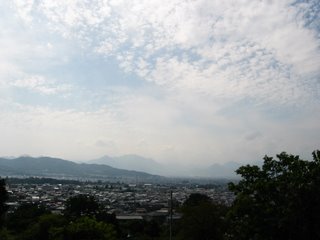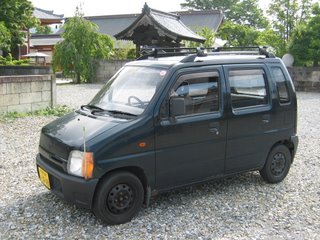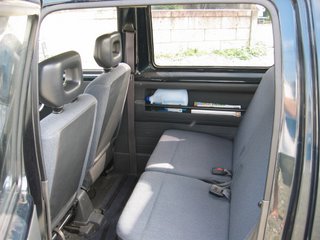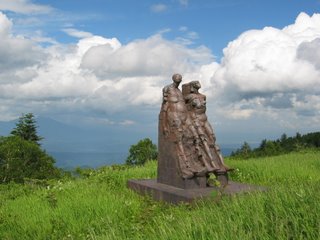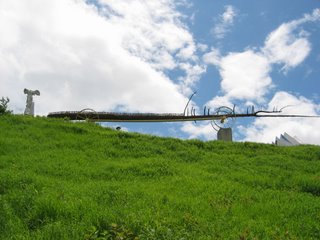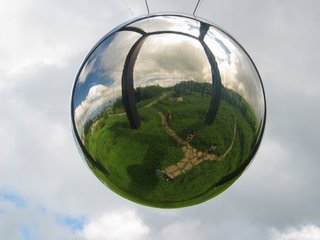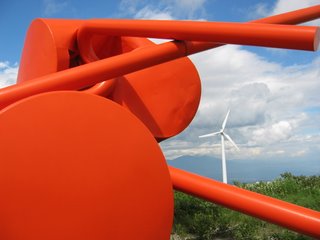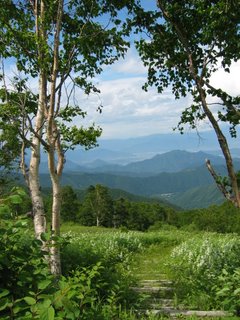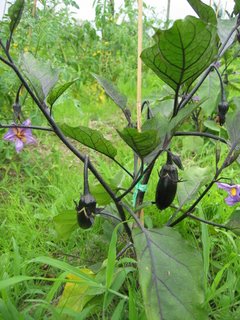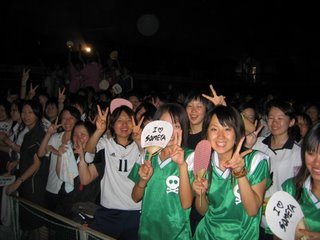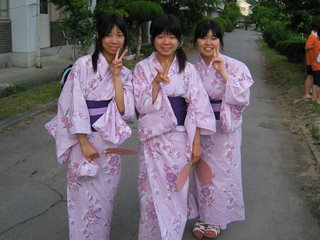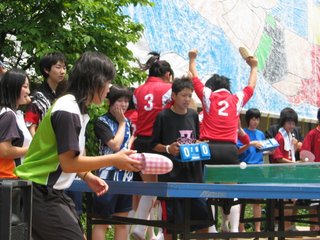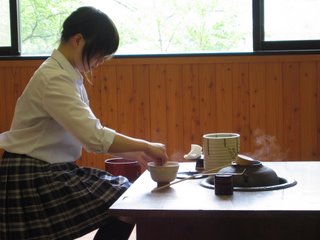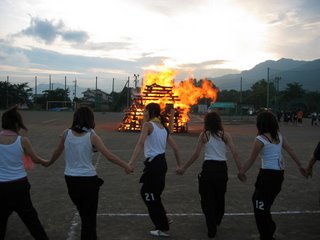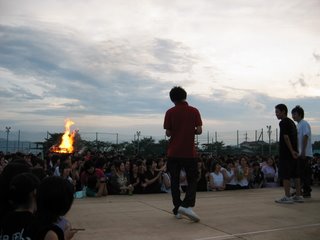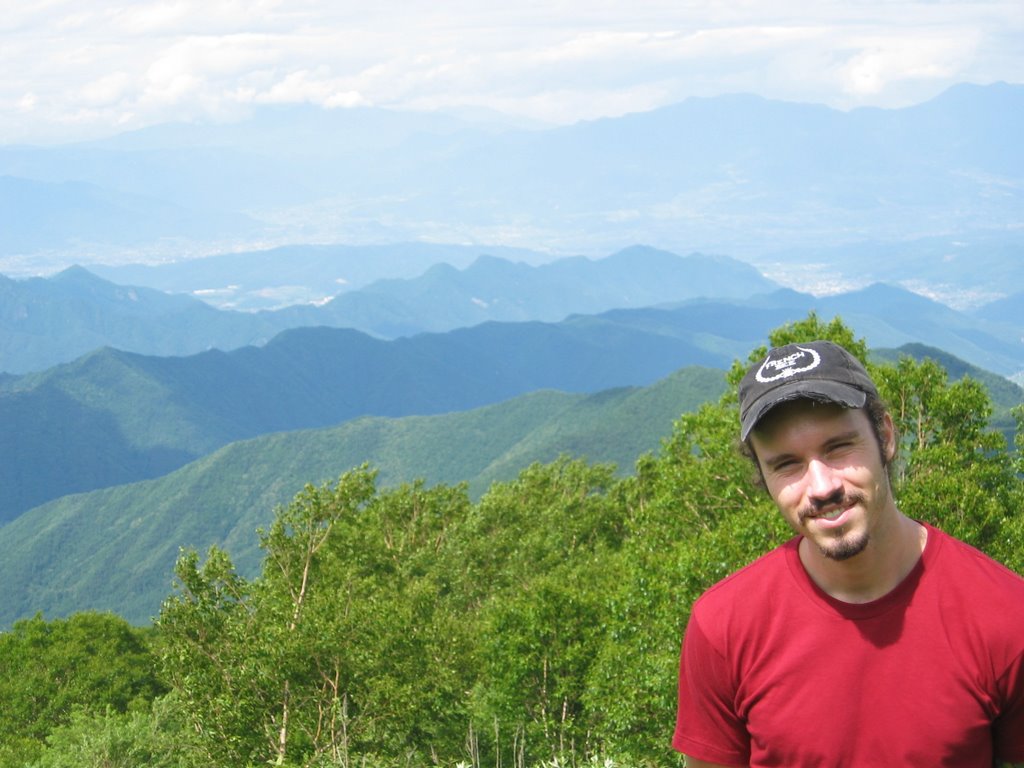Cambodia is a beautiful country. Rice fields radiate under the summer sun and shine in every imaginable shade of green. The temples of Angkor Wat and the surrounding areas are magical and seem like structures that have fallen to Earth from another world. Its people are some of the nicest I have ever met. But, Cambodia, like every other country haunted with the ghosts of its innocent people killed by war, is weighted with a heavy past.
A war waged by the Khmer Rouge that lasted almost 30 years and recently ended in 1998 devastated a country that could have otherwise thrived in the last half of the twentieth century. Instead of enjoying the tourism-driven prosperity from which neighboring country Thailand flourishes, Cambodia is now struggling to lure tourists to its temples and its countryside, trying desperately to convince the world that the country is finally safe and free from the stranglehold of war.
Because Vietnamese and Khmer Rouge soldiers frequently used land mines to protect themselves at night, and because these same soldiers often moved on in the morning without removing their buried walls of defense, huge swaths of the Cambodian countryside are loaded with slumbering land mines, weapons ready to burst to life with the slightest nudge or tap. When a historically agrarian society can’t utilize huge areas of its own farmland for fear of tilling over land mines, when a country holds one of the most mystical temple complexes on Earth but has difficulty convincing nervous travelers to come and visit, when the evil senior leaders of a corrupt regime that is guilty of committing genocide have never been brought to justice, when a war in which intellectuals were killed first subsequently robs a country of its most valuable thinkers and activists, a country like modern-day Cambodia emerges from the wreckage of chaos.
After a long train ride from Bangkok and an even longer taxi ride in a crowded Toyota Camry over some of the worst dirt roads I’ve ever seen (and felt), we arrived in Cambodia’s second largest city, Battambang. With a population of about one million people and not a single traffic light to its name, Battambang is a city that promises an exciting ride on one of the many motorbike taxis that line its roads. Because of its proximity to some of the Khmer Rouge strongholds and mass grave sites in northwestern Cambodia and its numerous temples that have yet to attract the smothering crowds that flock to Angkor Wat like moths to a flame, Battambang is slowly emerging onto the previously short tourist circuit in Cambodia.
Tourists first started noticeably visiting Battambang in 2000, and since then, Internet cafes, travel agencies, hotels, restaurants with English menus that serve “Western” breakfasts, and motorbike drivers that specialize in providing day long tours of the surrounding area complete with English narration have helped turned Battambang’s downtown streets into a traveler-friendly dusty oasis for weary tourists.
When we arrived in Battambang, we checked into a dingy hotel that offered windowless rooms for $3 a night called the Golden Parrot. The hotel balcony overlooked the central market, a seething mass of vendors, dirty umbrellas, piles of vegetables, trays of raw meat, and racks of clothes. From sunrise until well after sunset, vendors sit in the shade and haggle with the ever-flowing stream of customers that stop to inspect their wares throughout the day.
Tired and hungry after setting down our bags, we set off to find something to eat. Walking through downtown, we passed dozens of dusty storefronts, a few automobiles, a string of motorcycle repairmen racing with the setting sun to finish their work for the day, and piles of trash that had staked out large sections of sidewalk and hunkered down for the night. Within minutes of sitting down at a small family restaurant called The White Rose and ordering some food from an outdoor table, a skinny, barefoot girl with a dirty face and tattered clothes approached us. She held out her hands like she was waiting to catch a raindrop and looked hopefully into our eyes. Her pupils looked like big black nickels; she seemed drunk or stoned. We shook our heads and quietly mouthed things like “Sorry” and “No” and waited for her to leave as an uncomfortable veil of awkwardness settled in over our table. After two or three long minutes of staring at us, the girl left and moved onto the next table. Moments later, just after my pineapple fruit smoothie arrived, an elderly woman approached us and the same scene unfolded again. As I was halfway through my fried rice with vegetables, the young girl that we had met moments earlier returned carrying a dirty newborn baby. She approached us and hoped that seeing an unhealthy baby in her arms would move us to give her some money. Again, I looked into her wide, fixed pupils and got the impression that she was stoned. Again, I shook my head and refused to give her money.
Later that night, I saw the same girl stumbling past our hotel. This time, however, she was not holding a baby but pinching the top of a small, blue plastic bag; at seven or eight years old, the girl was one of Cambodia’s many glue addicts.
Children and adults sniff glue in Cambodia and other developing countries for any number of reasons—it’s cheap, it’s easy to get, it blocks hunger and makes users too stoned to worry about food, and, most importantly, it makes a life plagued by poverty and malnutrition seem more manageable. In Battambang, we saw small packs of homeless, barefoot children roaming the streets while laughing and horsing around with each other. Each child carried a small plastic bag that contained a line of industrial strength glue. Children openly huffed the glue in front adults, putting the bags to their mouths and inhaling and exhaling before pulling the bag away so as not to waste any of the glue’s fumes. Adults, usually fellow addicts, buy the children glue from motorcycle repair shops, and drink vendors, as we witnessed in shock, sell the children plastic bags in packs of 15 or 20 (drinks are sold in bags in Cambodia because bags are cheaper than cups or bottles). The children beg for change and sleep on the street. Other Cambodians generally ignore them, and the children rarely bother begging from their fellow Cambodians, unless of course the children spot one of the province’s many politicians emerging from an obnoxiously-out-of-place Lexus SUV. Their reluctance to beg from local people might be rooted in feelings of guilt and shame—other able-bodied people work hard to survive in Cambodia, hard enough to justify despising those who simply choose handouts over wages. Buddhism does require its followers to give to the less fortunate, and the children and adults who beg survive in part from this obligation, but, as our host and guide in Battambang, a man with two jobs, would later describe, many people are annoyed by those children and adults who can work but choose not to.
On our second day in Battambang, we met a man named Sambeth who drove us to his uncle’s house 15 kilometers outside of the city. Sambeth had just started a guesthouse and we contacted him after meeting one of his friends in Thailand in March. We drove beyond the city limits and sped along a narrow dirt road that bisected miles and miles of rice patties. People hunched over in the fields and tended rice in different stages, water buffalo silently pulled plows through the mud. As we rode, Sambeth explained that most people were too poor to afford “cow machines,” or tractors, so they tilled with water buffalo and cattle just as their ancestors have done for centuries.
When the road pierced a stand of trees about 45 minutes outside of the city, a line of raised shacks sprung up into view and Sambeth said, “Welcome to Tapon village.”
Tapon is home to 100 families who survive from farming rice, pineapple, and banana. The village received its first school in 1990 from the help of international NGOs. Prior to that, the only classrooms the children visited were the kitchens and rice fields of their parents; their only teachers were the villagers who had come before them. The U.N. provides pregnant women with pamphlets that visually explain different ways to ensure a safe and healthy pregnancy (among the recommended foods displayed on one pamphlet was a picture of a large frog, a common—and apparently healthy—snack in rural Cambodia). Organizations like Children’s International sponsor children in Tapon and some of the children lucky enough to be sponsored receive $6 a year for educational fees and expenses. School summer holidays in the village last almost four months and align with the rainy season so children can help their parents with the fall harvests. If ever a place existed that was different from every place I’ve ever visited in Japan, this was it.
Sambeth, a 36-year-old man with clean eyes, a nose flat and wide like the head of an old shovel, and dark, copper skin that, according to him, “never burns,” is a full time “moto driver.” He gives motorcycle rides to tourists in the form of full day tours through the countryside. When he was younger, he managed to convince the principal of a high school that both his family was too poor to pay for high school and he was too smart to skip out on a high school education. He was granted a free ride to high school, one that allowed him to study English for a single year. This year of English instruction saved him from a life of rice farming as it enabled him to start giving short rides to English-speaking tourists, rides that slowly morphed over the years into full day excursions laced with expertly told anecdotes, historical explanations of temples and landscapes, and relaxed small talk—all in English.
At $10 a day, Sambeth’s tours don’t earn him massive amounts of money, but he does earn enough to provide a reasonably comfortable life for himself, his wife, and his two children (he owns a small two room house in the middle of Battambang, two motorcycles—one purchased over 15 years ago for $300 and a new bike that cost over $1,000, and each time we saw his wife and kids, they were wearing unstained clothing and new flip-flops. His children eat regularly, go to school every day, and his son has a realistic shot at becoming the lawyer he hopes to be. By Cambodian standards, he seems to be doing alright for himself.) He gives tours three to four times a week from his base of operations, a hotel downtown that caters to tourists. He frequently gets calls on his cell phone from the hotel asking whether or not he wants to give a tour to a new hotel guest—he’s good at what he does and people know it.
Last year, at the urging of an American friend, one who had traveled around the world and seen how lucrative guesthouses can be when set up in the right location and well oiled with the right charm, Sambeth converted one of the two rooms in his uncle’s house into a guest room. Despite finding it hard to believe that any tourist in his right mind would want to spend time in a quiet village with no electricity or running water (and pay Sambeth for the opportunity nonetheless), he listened to his friend’s advice and started working on turning part of his uncle’s property into a cozy guesthouse. He bought a nice bed, a mosquito net, and a fan. He built a separate outhouse for guests, one that contained a Western toilet. He printed fliers describing his prices and his friend made him an English website. Despite never having accommodated guests before at his uncle’s house (Colleen and I were his first paying customers) Sambeth ensured that we had an amazing time during our stay. The food was fabulous, the people were incredibly hospitable, and the tours he provided were filled with stories and interesting information.
Many of the younger children in the village have never seen foreigners before. Whenever these children spied Colleen and I walking around, Colleen with her pointy, white nose and I with my lanky build, they would immediately start crying and running for their mothers! I felt quite strange being able to so easily thrust another human being into such an emotional frenzy; watching a child’s eyes fill with fear while that child is making eye contact with you is unsettling.
The older children and the teenagers in the village loved practicing English with us and ran to the edges of their yards to scream “Hello! Hello!” whenever we passed. Never before have I felt so foreign, so freakish. I’ve lived in one of the most homogeneous societies in the world for a year, a society in which I am not a member of the majority, and I still felt shockingly other in Cambodia. As we walked around, the youthful whispers of Barang! Barang! (Foreigner! Foreigner!) followed our every move, rippled through the grasses, and bounced down the narrow, dirt walkways in the village like the sounds of baby ghosts.
Some of my favorite moments in the village include:
--Watching children eagerly suck up every English word Colleen and I uttered over the course of three hours during one of the most exciting English lessons I’ve ever given. Three hours, no break, nothing but excited smiles and wide eyes from my pupils.
--Rising at sunrise each morning to walk to the village’s outdoor, daily market.
--Team-teaching at the village temple with a young, English speaking monk. Each afternoon during summer vacation, the children in the village come to the temple to study English. Again, all of the students seemed incredibly excited during the lesson and listened intently while I spoke.
--Watching a six or seven-year-old boy proudly walk his family’s few cows out to pasture. This job, watching after cows and making sure they graze throughout the day, is a popular one for young boys in the countryside, and each boy that tends cows carries a small whip with authority. (I know child labor is often thought of as a practice that robs children of the innocence that adults cherish and miss, and it often is, but when a child’s job is one that earns him respect from his family and peers, one that helps his family, connects him to centuries of culture, and allows him to play throughout the day at the same time, I can’t help but think that some forms of child labor can’t be categorized as either right or wrong, that sometimes foreign perspectives paint certain cultural traditions in dark, devilish hues. Of course, certain jobs in which children are forced to work in horrendous conditions, jobs that infringe on their basic rights, can raise alarm when viewed from any perspective. But some jobs are delicately sown into the aged cultural fabric of a people and blend seamlessly with a group’s daily life.)
We took a six-hour boat ride from Battambang up to Siem Reap, the home of Cambodia’s famous Angkor Wat complex. We passed through protected wetlands, seemingly endless fields of hemp, and floating villages of brightly colored one-room houses. When the boat docked at the small port in Siem Reap, a horde of motorbike drivers scanned the boat for white skin, and seeing as Colleen and I were the only white folks on the boat, a small gaggle of drivers swarmed around us the second we stepped onto the dock. Each driver carried an old, faded, laminated poster advertising a specific hotel in town, one that, if we chose to visit, would pay a commission to the moto driver. For $0.25, a man named Ti drove us to a hotel and agreed to drive us around the Angkor Wat temples the following day.
Siem Reap is a city that is being overrun with development. There are so many massive, gaudy hotels that have either just been built or are in the process of being built that the city has a Vegas-type feel to it (in a dusty, southeast Asian kind of way). One wonders how enough tourists could possibly be visiting the area to keep all of them in business considering how bad the roads are in northwestern Cambodia. Thankfully, this round-the-clock development is providing countless jobs for Cambodians who work in the construction field.
Angkor Wat is absolutely stunning. Before we got our first early morning glimpse of the temple that has been immortalized by post cards sent round the world, we had to pay $40 each for our three-day passes (just to put things into perspective: to visit the art museum in the capital city for a day costs $1, to visit Angkor Wat for a day costs $20). This amount of money is a small fortune in Cambodia, and as one would expect with something that is so exorbitantly priced in an impoverished country, a private company is responsible for the absurd pricing. Raping tourists at the cultural expense of the Cambodian people turns a remarkable profit. A private company (somehow) has managed to secure the right to run the admission counters at Angkor Wat. Rumor has it that 70% of the entrance fees go to lining the pockets of the top bastards at this company while 30% goes to park security, trash pick-up, and road maintenance. It’s no wonder that many of Angkor’s sculptures have been literally chiseled off of the walls over the years—a private company, one with little long-term stake in guarding the temples, has been left to protect a national treasure.
We visited the main temple (the complex is home to dozens of temples, each with its own unique feel to it) at sunrise and, as we expected, found ourselves in the company of about 150 camera-toting tourists. We quickly walked past the main gate as most of the tourists, like lizards waiting for midday warmth, were sitting in this area to catch the sun coming up over the temple, and we walked around to the side of the temple.
In the early morning dawn, the temple itself was practically deserted. The architecture looks similar to Mayan temple architecture—steep steps, pyramidal shapes. Looking for a designated pathway up the side of the temple but unable to find one, we started climbing. As we reached the highest tier, the sun was cautiously peeking over the horizon, seeming to check with the temple to see if the coast was clear. It was a quiet, serene sunrise. The reliefs started warming up, the light started sliding into impossibly small cracks, lighting up walls that had been carved almost 1,000 years ago. I can’t begin to describe how mystical the temple is in the early morning (nor do I feel like I should); it is something you have to see for yourself.
We spent three days visiting around 15 temples. My three favorites were Angkor Wat’s main temple, Bayon, and Ta Phrom. Bayon is a temple with dozens of massive stone faces carved into the temple walls and pillars. Ta Phrom is the famous temple in which Tomb Raider was filmed, a temple known for its towering trees, some hundreds and hundreds of years old, that seem to grow on top of the temple itself. The roots of these trees reminded me of Dali’s famous clock painting because it seems as if someone heated the roots up to some sort of melting point and let them drip over the edges of the temple walls and roof. The fact that the roots support such massive, towering trees perched atop crumbling ruins makes it look like nature is engaged in a centuries-long battle with man and his creations. Nature is clearly winning in Ta Phrom; the trees look like they are not only surviving but enjoying themselves, too.
Because this post is getting long, because it seems silly to be sitting here with a laptop and food in my belly in a modern apartment while writing about such a poor country, and because Cambodia is a place that needs to be felt in order to be understood, I’m going to avoid writing about spending time in a beachside town notorious for its adult and child sex industries, visiting Tuol Sleng Prison (an old high school that was turned into a torture compound during the Khmer Rouge crusade), and nearly missing our flight after being wrapped up in an elaborate transportation scam. Next time I see you, ask me about it.
Cheers,
A
 We've had an amazingly mild winter so far this year. I haven't been riding every Sat. and Sun. like last year because the snow hasn't been as good and the temperature in my apartment during the day is actually pleasant (last year, it was warmer/safer to go riding and work up a sweat than stay in my apartment sucking in carbon monoxide fumes all day).
We've had an amazingly mild winter so far this year. I haven't been riding every Sat. and Sun. like last year because the snow hasn't been as good and the temperature in my apartment during the day is actually pleasant (last year, it was warmer/safer to go riding and work up a sweat than stay in my apartment sucking in carbon monoxide fumes all day). left: Mike and I
left: Mike and I left: Greg, Tim, and I
left: Greg, Tim, and I left: Greg in the trees
left: Greg in the trees left: Stu, Tim, Mike, Rich, and Greg
left: Stu, Tim, Mike, Rich, and Greg left: Tim
left: Tim left: Tim and Greg at the top of the south face of 47
left: Tim and Greg at the top of the south face of 47
 left: After a 40 minute hike from the top lift, this was the view from the ridge before we went down the north face.
left: After a 40 minute hike from the top lift, this was the view from the ridge before we went down the north face. left: Tim scouting out a scary, wind-blown cornice type thing
left: Tim scouting out a scary, wind-blown cornice type thing left: After we made it down the north face, we ended up in a valley and had to ride along a river /cross a bunch of dams for an hour and a half to get back to our cars. This shot is of me climbing to get to my board after throwing it down to the snow from atop the dam.
left: After we made it down the north face, we ended up in a valley and had to ride along a river /cross a bunch of dams for an hour and a half to get back to our cars. This shot is of me climbing to get to my board after throwing it down to the snow from atop the dam.
